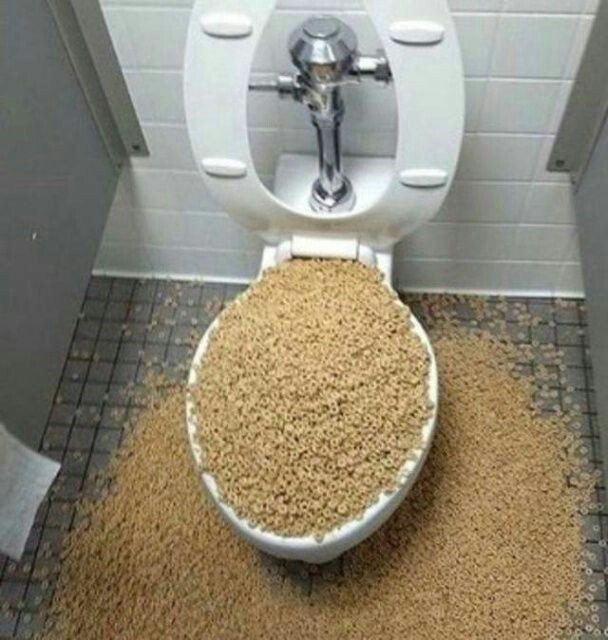Can You to Flush Food in the Toilet?
Can You to Flush Food in the Toilet?
Blog Article
Were you hunting for answers on Flushing Food Down the Toilet??

Introduction
Many people are commonly confronted with the dilemma of what to do with food waste, particularly when it involves leftovers or scraps. One usual question that arises is whether it's all right to purge food down the bathroom. In this post, we'll explore the reasons people might consider flushing food, the effects of doing so, and alternative methods for correct disposal.
Reasons that people could consider flushing food
Lack of recognition
Some individuals might not understand the prospective damage brought on by purging food down the commode. They may wrongly think that it's a harmless method.
Convenience
Purging food down the bathroom may look like a quick and simple remedy to taking care of undesirable scraps, especially when there's no close-by garbage can available.
Laziness
Sometimes, individuals might merely choose to flush food out of large idleness, without considering the repercussions of their actions.
Effects of flushing food down the bathroom
Ecological impact
Food waste that winds up in rivers can add to pollution and damage marine ecosystems. Furthermore, the water made use of to purge food can stress water resources.
Plumbing issues
Flushing food can lead to blocked pipelines and drains pipes, causing expensive plumbing repairs and aggravations.
Sorts of food that ought to not be purged
Fibrous foods
Foods with fibrous appearances such as celery or corn husks can obtain tangled in pipes and trigger obstructions.
Starchy foods
Starchy foods like pasta and rice can take in water and swell, resulting in clogs in pipes.
Oils and fats
Greasy foods like bacon or cooking oils must never be flushed down the toilet as they can strengthen and trigger obstructions.
Proper disposal approaches for food waste
Making use of a garbage disposal
For homes geared up with waste disposal unit, food scraps can be ground up and purged through the plumbing system. However, not all foods appropriate for disposal in this fashion.
Recycling
Particular food product packaging materials can be reused, lowering waste and decreasing ecological influence.
Composting
Composting is an environmentally friendly means to take care of food waste. Organic products can be composted and utilized to enhance dirt for gardening.
The significance of proper waste management
Lowering environmental harm
Appropriate waste management methods, such as composting and recycling, assistance minimize contamination and maintain natural resources for future generations.
Shielding pipes systems
By avoiding the technique of flushing food down the bathroom, property owners can protect against pricey plumbing repair work and keep the stability of their pipes systems.
Final thought
To conclude, while it may be alluring to purge food down the bathroom for ease, it is very important to recognize the prospective repercussions of this action. By taking on appropriate waste management techniques and taking care of food waste properly, people can contribute to much healthier plumbing systems and a cleaner atmosphere for all.
FLUSH FOOD DOWN THE TOILET?
FLUSHING FOOD CAN CAUSE BLOCKED DRAINS IN YOUR HOME
All of the plumbing fixtures in your home are connected to the same sewer pipe outside of your home. This outdoor sewer pipe is responsible for transporting all the wastewater from your home to the Council sewer mains. Even small pieces of food that go down the kitchen sink can cause problems for your sewer. It should therefore be obvious that flushing larger bits of food, such as meat, risks a clog in either the toilet itself or the sewer pipes. Flushing greasy food is even more problematic because oil coagulates when it cools, coating the interior lining of your pipes.
THE TOILET IS NOT A BIN
Food isn’t the only thing that people shouldn’t be flushing down the toilet. People use the toilet to dispose of all kinds of things such as tampons, makeup wipes, dental floss, kitty litter and even underwear. Water goes to great lengths to educate residents about the high costs and stress placed on wastewater treatment systems simply from people flushing the wrong stuff down the toilet. It costs taxpayers millions of dollars each year, and homeowners thousands in blocked drain repairs.
FLUSHING FOOD IS A WASTE OF WATER
Flushing food is a waste of our most precious resource - water. In June this year Level 1 water restrictions were introduced to protect water supply from drought conditions. Much of New South Wales continues to be affected by prolonged drought with recent figures revealing up to 97 per cent of the state remains in drought. Depending on whether you have a single or dual flush toilet, every single flush uses between five and 11 litres of water. In the current climate this is a huge amount of water to be wasting on flushing food that should be placed in the bin (or better yet, the compost).
https://www.jabplumbingsolutions.com.au/blog/can-you-flush-food-down-the-toilet

We had been guided to that article on Is it safe to flush food (especially rice) down the toilet? from a good friend on our other site. Enjoyed reading our write up? Please quickly share it. Let somebody else locate it. I am grateful for being here. Don't forget to check up our site back soon.
Call Today Report this page